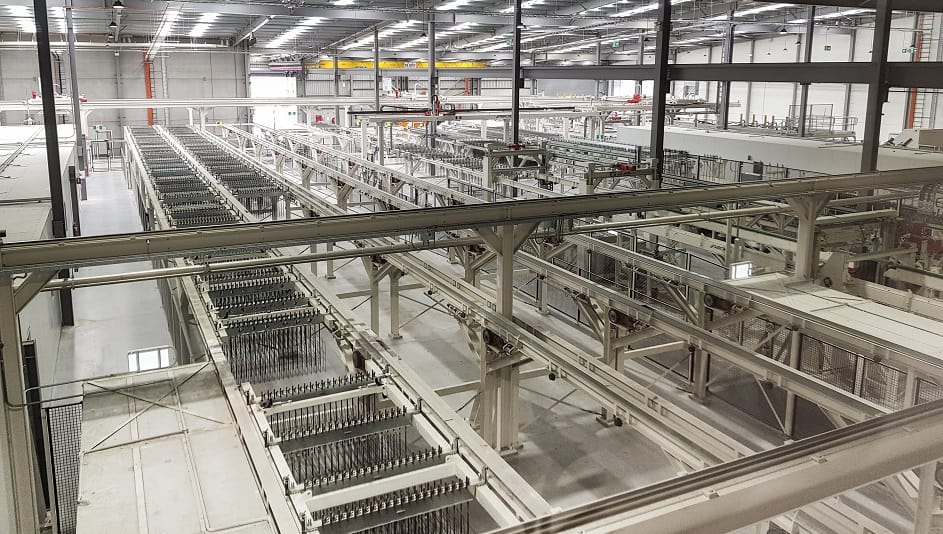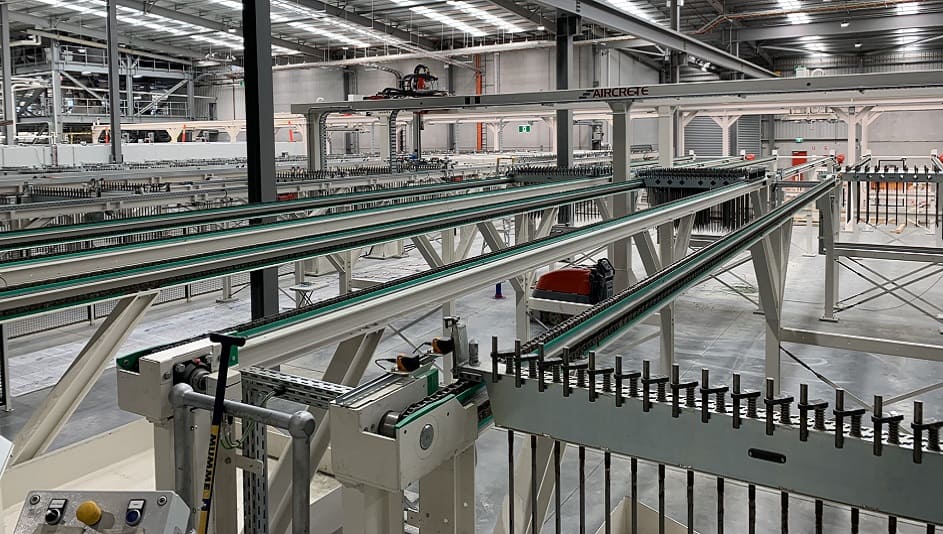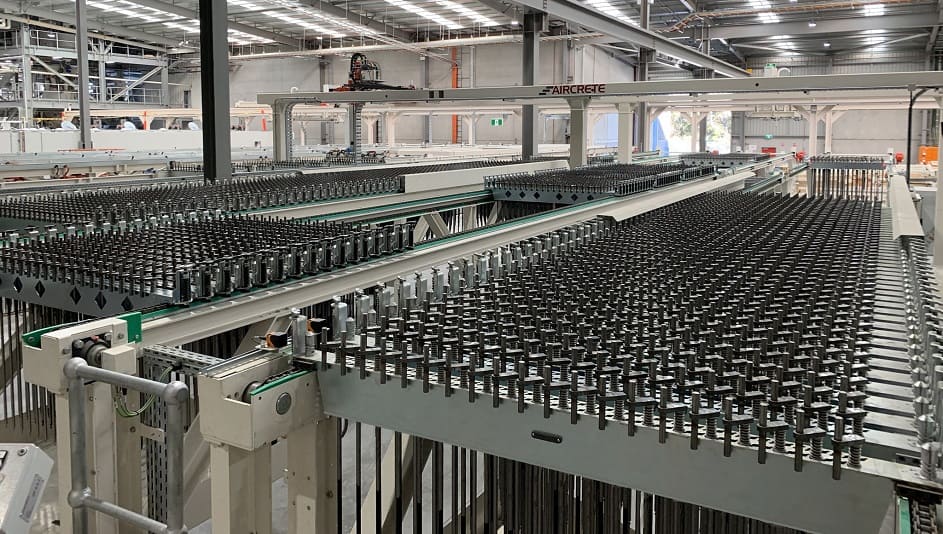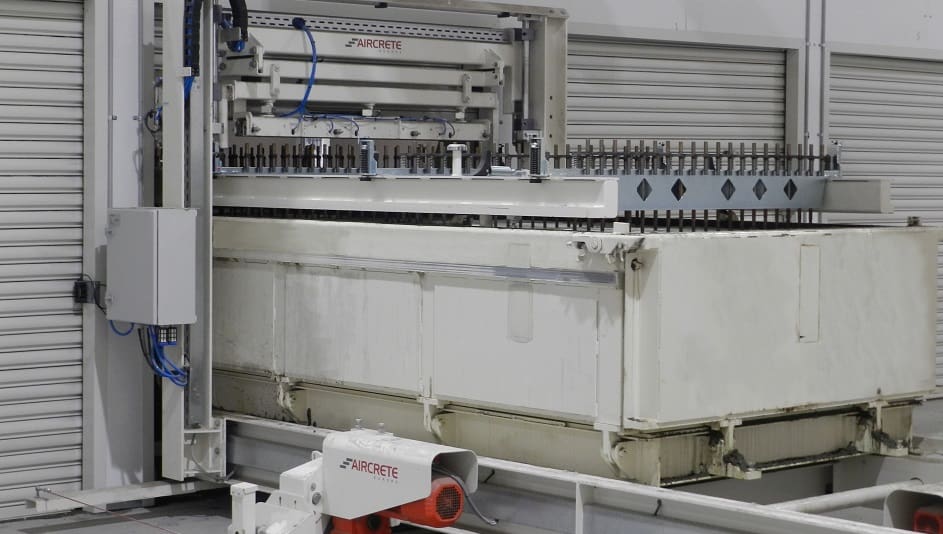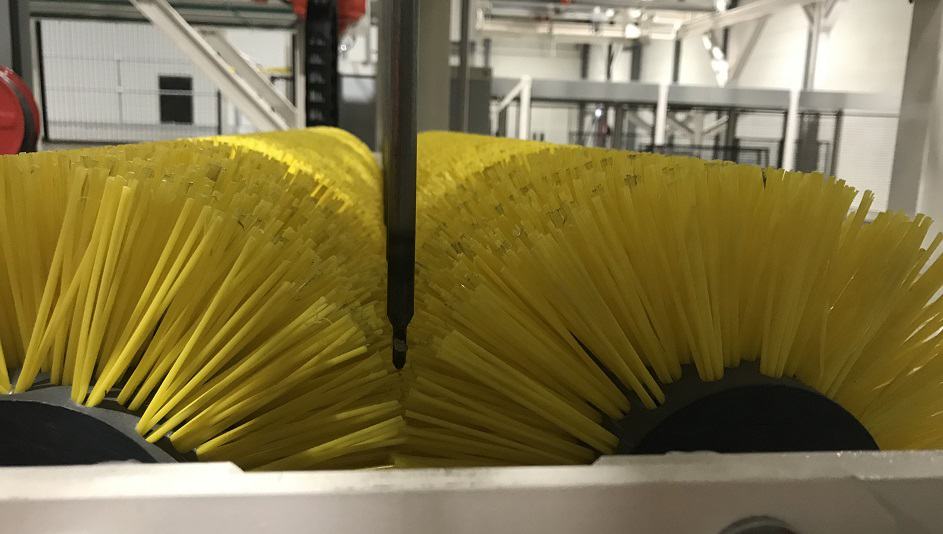Aircrete Explained: Reinforcement Frame Preparation
Making AAC panels requires a completely different mindset
The evident shift towards AAC panels from AAC blocks over the last decennium requires a fundamentally different approach in how AAC is being produced. In the first place, the right production technology (i.e. flat-cake cutting) for the plant needs to be chosen from the very beginning. Working with a wrong production system such as tilt-cake when making AAC panels, will inevitably create significant limitations, regardless of the bells and whistles that will be added to compensate for the shortcomings of using this technology for panel production. Additionally, a completely different mindset about production is necessary to achieve what is required. An AAC panel plant can simply not be run as a block plant.
The challenges of producing high-quality AAC panels can only be undertaken with a fully integrated panel factory solution today. We have been focusing on reinforced AAC panel production throughout our existence and possess several decades of experience around this topic. The basis of Aircrete fully integrated panel factory solution is the Aircrete Flat-Cake production line that natively provides all required flexibility and quality requirements for the most extensive panel portfolio possible without a compromise.
The front side of the Aircrete Flat-Cake production line is the fully automated reinforcement area. This article covers the details of reinforcement production, preparation and assembly stages of this totally integrated and automated solution, where everything works together seamlessly. Read our full article below for more details on how this unique Aircrete reinforcement solution can bring your AAC production operations to the next level: versatile, large volume and fully automated AAC panel production.
Throughout the history of Autoclaved Aerated Concrete (AAC) production, non-reinforced blocks always were, in most markets, at the center of the product portfolio. This made sense as these products are easy to handle and build with, and do not need much instruction. Furthermore, pure block producing plants are easy to manage, technologically simple and do not need a lot of expertise to produce at relatively high capacities.
Due to the rapid developments in the building industry over the last decennium, non-reinforced blocks have moved more towards the background. Instead, reinforced AAC products, such as wall, floor, roof and cladding panels have gained terrain significantly, and are now taking over the leading product portfolio in many markets (Fig. 1).
Fig. 1: A site application of reinforced products (floor and cladding panels on steel structure)
This shift in product demand requires a fundamentally different approach in how AAC is being produced. It goes without saying that, in the first place, the right production technology (i.e. flat-cake cutting) for the plant needs to be chosen from the very beginning, as an investment in an AAC plant is a long-term investment.
Working with a wrong production system when making AAC panels will inevitably create significant limitations, regardless of the bells and whistles that will be added to compensate for the shortcomings of using this technology for panel production. Additionally, a completely different mindset about production is necessary to achieve what is required. An AAC panel plant can simply not be run as a block plant.
The challenge of producing panels
The points that are often underestimated in producing reinforced AAC products are handling, flexibility and accuracy. It is often observed that production lines for reinforced products are designed as if they were designed for producing non-reinforced blocks. Although this mindset might appear to be very natural as there seem to be many similarities at first sight, the reality is that they are completely different product groups. Both in their application and in the way they should be produced.
While producing reinforced products, an extra complication is added to the production process: reinforcement production and handling, while fast cycle rates should be maintained in order not to lose capacity. It is often (falsely) assumed that ‘just buying a welding machine’ will do the job. In addition to the reinforcement preparation, the complication in packing and sorting of finished products is something that is often not well understood, and many times underestimated.
In order to handle reinforcement in the production process and correctly insert this into moulds eventually, several ‘traveling devices’ are required (Fig. 2). These devices hold the reinforcement temporarily throughout the casting and settling process whereafter they are recirculated again for the next cycle. These traveling devices consist of reinforcement frames (a carrier-frame holding a full mould configuration of reinforcement), cross bars (carrier-bridges that hold needles, mounted on a reinforcement frame) and several types of reinforcement needles that match various types of reinforcement such as bars, single mesh or cages, depending on the end product.
Fig. 2: An overview of the automated reinforcement area
In many existing plants it was and often still is a very labor-intensive and time-consuming process to configure these reinforcement travelers, as they are large in number and their handling is complicated due to their weight and size. Additionally, room for error is quite large and deviations occur easily due to many manual interventions. This is why most plants that try to produce panels, only reach a very low output number with high reject rates or a very limited non-versatile product portfolio.
So, what is needed for high-quality AAC panel production?
Aircrete Europe has been focusing on reinforced AAC panel production throughout its existence and possesses several decades of experience around this topic, resulting in a fully integrated panel factory solution today.
The basis of the Aircrete fully integrated panel solution is the Aircrete Flat-Cake production line. This line natively provides all required flexibility and quality requirements for the most extensive panel portfolio possible without a compromise.
The front side of the Aircrete Flat-Cake production line is the reinforcement area (Fig. 3). Within this area, reinforcement is produced just-in-time whereafter it is prepared and assembled into the downstream processes. All of this can be done completely automatically, without a single operator, and is controlled from the central plant control system. The equipment in this area is seamlessly integrated and controlled by the overarching in-house developed Aircrete Plant Control System.
Fig. 3: Multiple handling devices are required in an automated reinforcement area
Due to the need for flexibility in panel production, reinforcement products are made real-time upon request. This means that any possible reinforcement design, whether it is a bar, single mesh or cage, can be used in the process right at the moment when it is needed. This fully automated just-in-time production is realized on the Aircrete line to ensure both high-capacity production and product versatility at the same time. Manual and time-consuming changeovers, with possibilities for errors, can therefore be avoided.
Reinforcement production, preparation and assembly
The first stage of reinforcement production starts with configuring the reinforcement frame (traveler) for the reinforcement batch that is requested from the Manufacturing Execution System (MES) (Fig. 4). As full-dimensional flexibility is required in production (every single mould can contain different products), holding needles can be placed in any position, and therefore, the reinforcement frames need to be configured continuously and just-in-time.
Fig. 4: A magazine of cross bars from which the correct reinforcement frame is configured as per the batch request from the MES
For configuring frames, Aircrete Europe has developed a fast, multi-axis robot that automatically selects the right cross bar with the right needles (Fig. 5) and securely attaches it to the reinforcement frame. With this robot, it is possible to assemble, reconfigure or disassemble a frame within the high-capacity factory cycle times under very high accuracy. As all travelers are equipped with RFID tags, full traceability is ensured throughout the entire process.
Fig. 5: The multi-axis robot that selects the right cross bar with the right needles
When the reinforcement frames are configured, they are transported to the welding line where the reinforcement is inserted. Aircrete Europe uses a tailored welding line that is able to provide the right reinforcement at the right pace. This complete line is integrated with the total solution and the central Aircrete Plant Control System.
Straight after welding, reinforcement is automatically assembled on the needles of the reinforcement frames (Fig. 6). Next, the frame with reinforcement is coated, dried, matched with the right mould and recipes downstream and stored in an automated buffer area for further processing. At any given point in time, the plant control system knows the exact position and status of any traveler and reinforcement.
Fig. 6: Reinforcement is automatically assembled on the needles of the reinforcement frames
After reinforcement is inserted into the moulds during casting (Fig. 7) and cakes have spent the required settling time in the rising area, an automatic unlocking system makes sure that needles are detached from reinforcement before the cakes go to the cutting area (Fig. 8). The reinforcement frames with needles are then automatically removed from the moulds and fed back into the reinforcement preparation process.
Fig. 7: The reinforcement frame as it travels to be placed in the mould
Fig. 8: The automatic unlocking system detaches the needles from reinforcement inside the cake after pre-curing
Upon re-entry in the reinforcement area, all needles are automatically cleaned, locked (where required) and waxed (Fig. 9). Next, the reinforcement frames arrive at the cross bar robot again which reconfigures, reassembles, or disassembles them according to the requirements for the next batch in line.
Fig. 9: The automatic needle brushing unit cleans the slurry residue on the needles
Controls and integrations
The entire plant, including the reinforcement area, is managed by the Aircrete Plant Control System. Apart from the basic PLC and SCADA controls, the control system includes an extensive MES that communicates back and forth with all common Enterprise Resource Planning (ERP) systems such as SAP, Oracle and MS Enterprise Dynamics, as well as custom API’s.
The control system also includes a tailored configurator tool that translates the production orders from upstream (ERP) into the plant and through to the equipment. Prior to the order confirmation release, the configurator checks whether the equipment and resources are available and able to produce the desired product. In case a modification or an intervention is needed, this can be graphically realized in the configurator based on a no-code philosophy. This is specifically useful in communication with the welding equipment.
Conclusion
In order to produce a flexible portfolio of high-quality reinforced AAC products, one needs to have handling, flexibility and accuracy under control. The safest way to accomplish this is to implement a totally integrated and automated solution, where everything works together seamlessly.
Aircrete Europe delivers complete and highly-automated reinforced AAC panel production plants, using the latest technology standards and developments. In most plants that produce reinforced products, the staff headcount in that area easily sits between 8 and 14. Not only this is expensive, but also, and more importantly, it increases the room for error exponentially and decreases the capacity. The Aircrete reinforcement area does not need a single operator to control the process.
Integrating the unique Aircrete reinforcement solutions into an AAC factory brings the operations to the next level: versatile, large volume and fully-automated AAC panel production.
Get in touch with us
We are ready to talk about your fully automated reinforcement area project.




